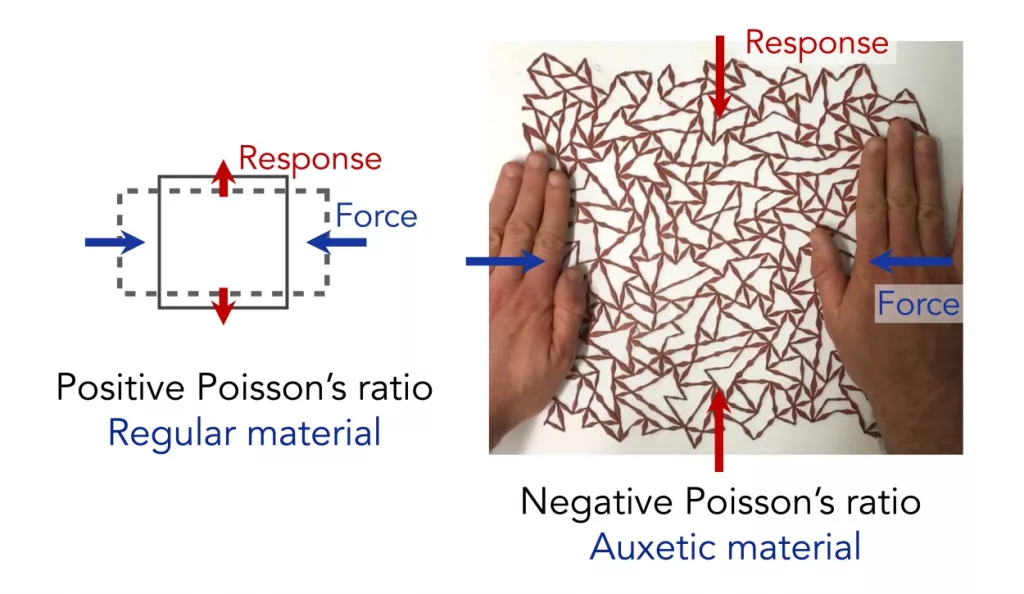Robotic granular materials

We have developed soft, deformable granular particles where the properties of each particle (stiffness, size, shape) can be individually controlled. Such a packing can easily switch from one configuration to another, allowing us to control its mechanical behavior.
These particles also provide us with a very interesting experimental setup that can be used to model and identify emergent behavior in a variety of systems including living tissues, active matter, and liquid crystals.
Metamaterials from disorder

Random disordered networks can be manipulated to change their mechanical behavior. For example, by simply removing selective bonds from a random network, one can rapidly change its Poisson’s ratio, 𝜈, anywhere between the auxetic (𝜈 < 0) and incompressible limits (𝜈 > 0). Shown here is a network that was designed to have a very low Poisson’s ratio. It is isotropically auxetic, with 𝜈 ~ -0.9.
Allosteric metamaterials

An interesting property to incorporate in disordered systems is a long-range targeted response at a localized site of a network. We can prune a disordered network so that by perturbing a pair of particles at one site, we can get a desired response at a distant site within the same network. This response is similar to the ‘allosteric’ regulation in proteins where a reaction at one site activates another distant site of the protein molecule.
Instead of permanently pruning bonds, we can also make these systems reprogrammable, where different sets of bonds can be softened on demand to create an allosteric response at different sites.
Memory and training

As disordered materials age, they locally go downhill in a complex and rugged energy landscape. But the exact path that a material takes depends on various factors, including its initial state and the stresses it experiences over time, leading to a material ‘memory’. This memory of the material can be used to build metamaterials by training, rather than building them from ground up. We can direct a material’s aging process by controlling the conditions under which the materials evolve, and create materials with interesting mechanical responses in linear as well as non-linear regimes.
Tessellated granular materials

Mechanical properties of ensemble averages of granular packings are well understood. However, small packings of particles can behave significantly differently depending on the contact network and particle rearrangements. Carefully designed granular systems can lead to novel behavior and give new insights about granular media.
For example, the shear modulus of bulk granular systems typically increases with an increase in pressure in the system. However, shown on the left is a flexible tessellation filled with particles that does the opposite. This ‘composite material’ exhibits a shear modulus that decreases with increase in pressure; a response that is unlike most materials found in nature.